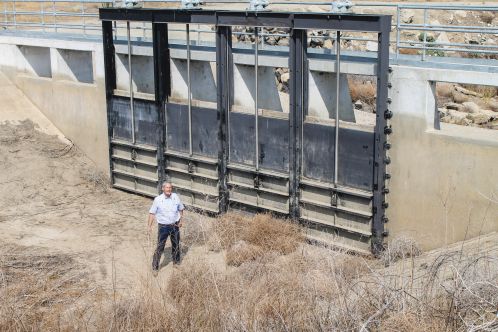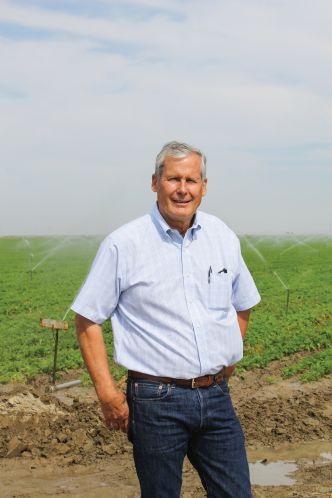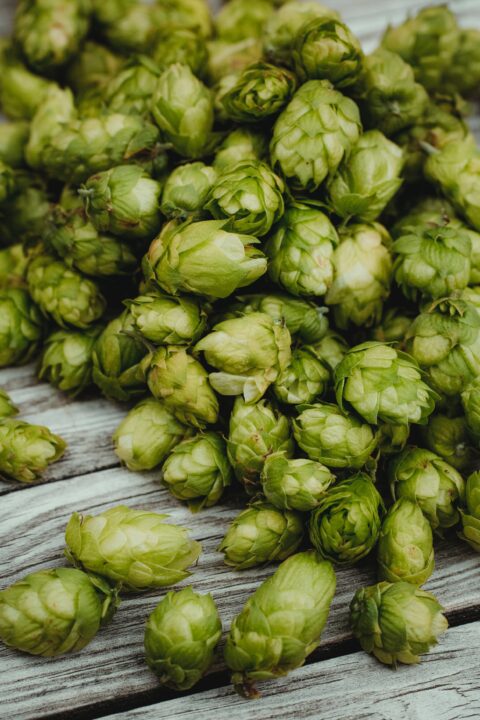Saving Water: Stocking Up On A Precious Commodity

Don Cameron, general manager of Terranova Ranch Inc., which is located near Fresno, CA, in the throes of the state’s drought, September 2013. (Photo credit: David Eddy)
There’s an old saying attributed to Mark Twain: “Everybody complains about the weather, but no one does anything about it.”
The quotation is particularly applicable today in the West, where years of drought have taken a toll. Especially in California, where years of pumping ground water have dropped the water table to the lowest levels in recorded history. But one grower is in fact doing something about it.
Don Cameron, general manager of Terranova Ranch Inc., which is located near Fresno, CA, actually got the seed for his idea of refilling the aquifer way back in the early 1980s. The winter of 1982-83 was a so-called “El Niño year,” with storms coming through the state on a regular basis.
There was so much rain, the San Joaquin River flooded over its banks and into an adjacent winegrape vineyard. Cameron drove by the vineyard each day on his way to and from work, and noticed that only the tops of the mature vines were sticking out of the water. This went on for several months.
As spring came and the storms abated, Cameron expected the vines would look sickly as the water drained from the vineyard. But that didn’t happen.
“The darn things started growing normally, and they actually harvested the grapes,” he says. “I just kind of filed that away.”
Super-Soaking Crops
Cameron was pretty sure he was on to something, but he couldn’t get anyone interested. Finally, in 2010, he was able to secure a $75,000 planning grant from the National Resources Conservation Service. To show he was willing to put his money where his mouth was, Terranova Ranch chipped in $125,000 to prove the concept was viable.
After doing some research, he flooded every crop he grew that could withstand it. They flooded pistachio orchards, and, as might be expected, winegrapes.
“We pushed 9.5 acre-feet through those grapes,” he says. “Of course, this was on sandy ground; some soils are more porous than others. You can’t have an impervious barrier; the water must be able to flow into the aquifer.”
The On-Farm Flood Capture Project certainly wasn’t inexpensive, but Cameron thinks it was worthwhile.
“I was tired of watching the water (from the North Fork of the San Joaquin River) going out to the ocean,” he says. “Anything we could do to bring the water onto the farm and save groundwater pumping would be great.”
Over the past 110 years, the water table under Terranova Ranch had dropped an astounding 250 feet, he notes.
“You know what’s ironic? We used to have artesian waters here,” he said, meaning that the water table came all the way up to the surface.

Many years ago, Don Cameron noted flooding winegrape vineyards did not damage the vines. (Photo credit: Terranova Ranch)
Preventing Flooding
Terranova Ranch is not located in an irrigation district, so the operation had to install its own infrastructure. In 2011, the farm received a grant through the Kings River Conservation from the California Department of Water Resources, but the operation still had to spend $7 million of its own money, and Cameron says the total will end up being even more.
The operation had been trying to get the project launched before that, but the timing, 2011, turned out to be perfect as the state’s drought took hold. Terranova now has a plan in place so that by next year, they it will have a long-term, sustainable groundwater plan.
“We’ve got a reservoir under our feet, so let’s fill it up,” he says. “You can’t take out more water than you’re putting in — that’s the key.”
It’s not just about the drought, Cameron says. It’s a fact that temperatures are up worldwide, and he thinks we will see not only more droughts in the future,
but flooding.
“It may change what we grow and how we grow it,” he says. “Back in the 1970s, we used to have to turn on water during frost events. We used to have icicles on the almond trees when they were in bloom.”
Any water must be captured and used because in the West, water is simply too precious to waste.
“I’m not all doom and gloom, but we have to plan for (unusual weather events),” Cameron says. “I’ve been farming for 35 years; spring is coming earlier and earlier and the falls are longer and warmer.”
Changing Mindset
It’s not just permanent crops or the aquifer that can benefit through on-farm flooding projects, he says. In January and February they flood fields that will be planted with processing tomatoes, so they can get off to a good start.
But he cautions that growers can’t do it on clay; they must have sandy soils with good infiltration rates. If so, they will benefit not only themselves, but
all growers.
“We’re correcting a problem that we started by farming with all the groundwater in the first place. Any water we put in the ground means more water for everybody. For me, it just seemed like the right thing to do, but it seems we’ve pioneered a new concept,” Cameron says. “I’ve got friends that used to think I’m crazy, but now they’ve come around. We’ve seen a real shift in attitude.” ●

Don Cameron, General Manager of Terranova Ranch Inc., Helm, CA. (Photo credit: David Eddy)
SIDEBAR: MVG – Most Versatile Grower
You’d have to look far and wide to find a grower who farms as many crops on the scale Don Cameron does. Cameron, who runs Terranova Ranch in Helm, CA — not far from Fresno — grows fruits, nuts, vegetables, and seeds, both conventional and organic.
He farms about 7,000 acres in total, including the big three tree nuts: walnuts, pistachios, and nearly 1,000 acres of almonds. Cameron also grows olives and 500 acres of winegrapes — seven varieties of the latter.
He also grows “no-heat jalapenos,” which are favored by a certain large sandwich chain, as well as bell peppers, carrots, and onions. That’s not to mention the numerous seed crops: kale, mustard, and arugula.
Cameron also has a vast amount of processing tomatoes — 500 acres of organic alone. In fact, he has served as chairman of the California Tomato Commission as well as chief of the California Cotton Growers Association.
When not farming, he can be found testifying in the state capitol of Sacramento or in Washington, D.C., on a variety of agricultural issues.
“It keeps me busy,” he says matter-of-factly.








